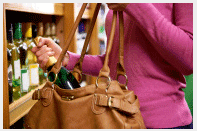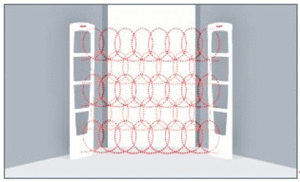 Whether you’re a small one store business, or a large chain store, loss prevention awareness training for your teams cannot only protect against criminal acts, but also make a direct and positive impact on your bottom line. There is an inherent value in awareness training that lots of managers just don’t take advantage of. The core of any successful loss prevention program is not how many shoplifters are caught, nor is it how many employees were arrested; it’s training and awareness of your store teams. We are called loss “prevention,” not loss “reaction,” right? So how do you persuade your managers to see the value?
Whether you’re a small one store business, or a large chain store, loss prevention awareness training for your teams cannot only protect against criminal acts, but also make a direct and positive impact on your bottom line. There is an inherent value in awareness training that lots of managers just don’t take advantage of. The core of any successful loss prevention program is not how many shoplifters are caught, nor is it how many employees were arrested; it’s training and awareness of your store teams. We are called loss “prevention,” not loss “reaction,” right? So how do you persuade your managers to see the value?
In my experience, in order for a manager to really do something, and to buy in to anything, you have to appeal to the “what’s in it for me” mentality. (Because a job and steady paycheck just aren’t enough.) What’s the biggest complaint from your managers? What I hear most is “payroll”. They need more people and more allotted hours to get the job done right. You surely just can’t dole out payroll hours, as this is the biggest controllable expense you have. So you have to work with what you’re given; but what if what you’re given is slowly being eaten away by shrink?
Shrink has a direct impact on payroll. Take for instance, if your store lost $12,000 last month to shrink and we assume that you have an average hourly rate of about $10/Hr. That $12k you lost could’ve been sales, had you had the product in stock for the customer. That equates to about 70 payroll hours you’ve lost. That’s 3 part time workers, or 1 full time and 1 part time worker. So how do you recoup some of those hours? Awareness training.
Well, who do you train? I always start with the cashiers. This group is your last line of defense against fraudsters. So much can happen at the point of sale. You can have price-switchers, quick-change artists, box stuffers, counterfeiters, etc. A well trained cashier can quickly spot these thieves and save you thousands. Take for example, ice chests/coolers. A poorly trained cashier may never think about opening these up as they come through the line. This is a gold mine for organized criminals. How much product can you hide in a 160qt ice chest? This would be a good starting point for any training program. Every cashier should be expected to open the contents and check for any hidden product. You’d be surprised at what you’ll find.
Monitor your success. Let’s assume you start with this simple step. Each time your cashier finds hidden merchandise, you record the dollar value of the save. Maybe you even spark a little competition amongst your cashiers. At the end of the month, you (and the manager) have a solid number to show the value in that small investment you made in training. Now you can expand.
What makes a successful training program work is having fun. I had a store manager years ago that really inspired her team. She went around the store and hid little notes inside backpacks, coolers and anything else that she wanted her teams to open and look inside. Those notes said, “When found, bring to a manager”. Those cashiers were then rewarded in some way. From this program, this manager was able to make a positive financial impact of over $10,000 in what otherwise would have been stolen product.
That’s an extreme example. I have other stores that have an “item of the week”. The cashier supervisors’ partner with the department supervisors and each week, they showcase a high ticket item. One week it may be an expensive tent, and the next week a high end toothbrush. During the week, all the cashiers have an opportunity to touch the product, learn about it and understand that it’s an expensive item. This not only gives them the ability to speak to the product to our customers, but to also identify any potential price switch scenario they may encounter.
It’s hard to argue with the value a good LP training program can bring to your store. Not only can you increase your sales, but you can also positively impact your shrink and wage metrics. You also limit the exposure your store has to criminal activity, so your employees and customers can shop and work in a safer environment. If you’re not using your entire team to prevent shrink, it’s time to do so; your bottom line is depending on it.


 According to the
According to the  My grandparents owned a small hardware store back in the late 1950s. Back then, when my grandpa left at 5pm, he simply locked the back door, gathered his belongings and left, locking the double glass front door behind him with nothing more than a standard lock that you’d find on any home at the time. The front of the store was nothing but glass. He had cash and at least $100k worth of merchandise on the shelves. Wouldn’t it be nice if things could go back to the way they were back then? Could you imagine if you left your store this soft nowadays? Burglaries happen, and they happen often. Over the past ten years as a Regional LP manager for my company, I’ve had it happen a total of 12 times. About once a year, or so, someone, somewhere across my region, breaks into one of my stores; or at least tries to do so. We have a lot of things that we implement to prevent this from happening, so when someone is able to breach our perimeter, it’s usually caused by human error.
My grandparents owned a small hardware store back in the late 1950s. Back then, when my grandpa left at 5pm, he simply locked the back door, gathered his belongings and left, locking the double glass front door behind him with nothing more than a standard lock that you’d find on any home at the time. The front of the store was nothing but glass. He had cash and at least $100k worth of merchandise on the shelves. Wouldn’t it be nice if things could go back to the way they were back then? Could you imagine if you left your store this soft nowadays? Burglaries happen, and they happen often. Over the past ten years as a Regional LP manager for my company, I’ve had it happen a total of 12 times. About once a year, or so, someone, somewhere across my region, breaks into one of my stores; or at least tries to do so. We have a lot of things that we implement to prevent this from happening, so when someone is able to breach our perimeter, it’s usually caused by human error. It was 4:30am on a Tuesday morning. My company cell phone pierced through the quiet halls of my house. At first, I didn’t get out of bed; perhaps it was a wrong number. Silence. As I doze back off, I hear the familiar tone once again. Who could be calling me and for what reason at this hour? I let it ring. I hear the chirp of the voicemail. Before I can muster the energy to get out of bed, I hear my personal phone ringing. This one is next to me on the night stand. Something is wrong, I immediately think to myself. When I reach for my phone in the middle of the dark room, eyes still blurry, I see the caller ID. It’s a sheriff’s deputy that I’m good friends with. My heart is in my throat as I answer. “You’re morning crew was just robbed at gunpoint. Get to the store now.”
It was 4:30am on a Tuesday morning. My company cell phone pierced through the quiet halls of my house. At first, I didn’t get out of bed; perhaps it was a wrong number. Silence. As I doze back off, I hear the familiar tone once again. Who could be calling me and for what reason at this hour? I let it ring. I hear the chirp of the voicemail. Before I can muster the energy to get out of bed, I hear my personal phone ringing. This one is next to me on the night stand. Something is wrong, I immediately think to myself. When I reach for my phone in the middle of the dark room, eyes still blurry, I see the caller ID. It’s a sheriff’s deputy that I’m good friends with. My heart is in my throat as I answer. “You’re morning crew was just robbed at gunpoint. Get to the store now.”
